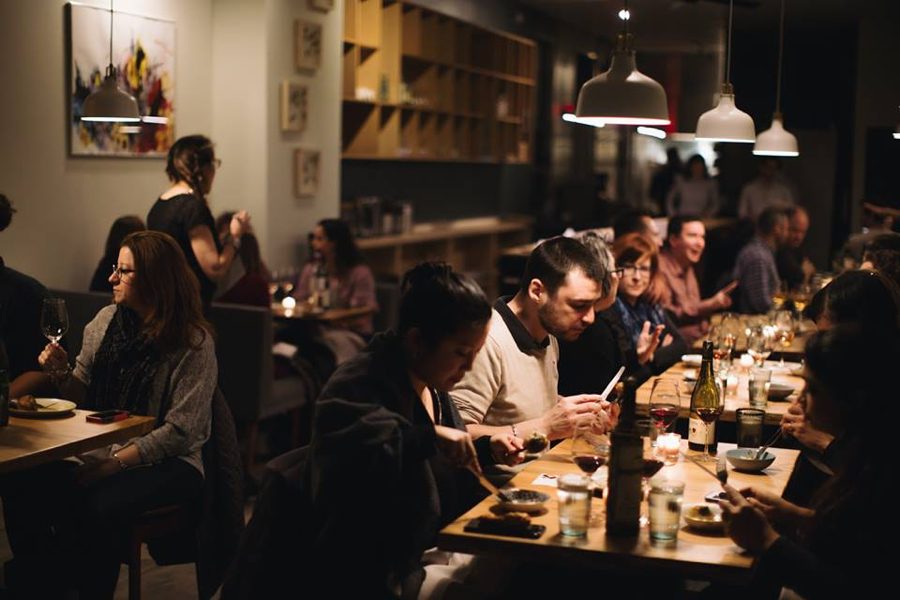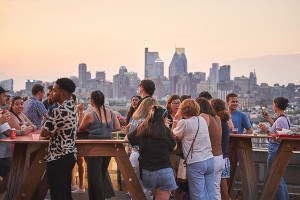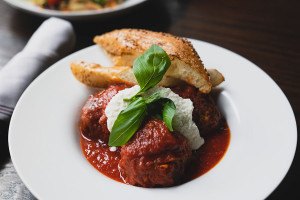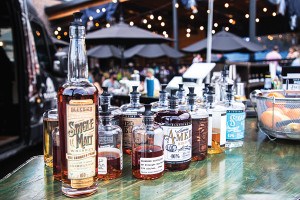Pray for the Philly BYOB
Without a grand reopening for restaurants, the upscale BYOB business model just isn’t sustainable.

Little Fish, one of the many chef-owned BYOBs in Philly facing an uncertain future due to the coronavirus crisis | Photo by Ted Nghiem
I’m not sure anybody who entered a creative field ever had a choice in the matter. As I see it, artists, writers, musicians — they choose professions filled with uncertainty and instability because of a need, not a want, to produce, no matter the cost. Chefs, I think, fit into this category, too — otherwise, I’m not sure why they get into the restaurant game at all. It’s not an especially comfortable life; it’s hard to make good money. Restaurants are notoriously difficult businesses to operate, yet they continue to open by the hundreds, year after year — even in Philly, a city that doesn’t exactly provide a hospitable atmosphere to budding food entrepreneurs.
Before the coronavirus, commercial rents were growing exponentially. The worker pool was shrinking, and the customer base — the diners with the means of indulging in luxuries like restaurants — wasn’t exactly keeping up with the frequency of restaurant openings. But all that aside, it’s the Pennsylvania Liquor Control Board that has really made (and continues to make) things hard on owners. The PLCB’s quota system (the state only issues one new liquor license per 3,000 people in a given year) makes the cost of a liquor license upwards of $180,000. And without a liquor license — without that second stream of revenue — a restaurant’s notoriously razor-thin profit margins are that much thinner.
Still, for whatever reason, Philly chefs persisted (it’s a need, not a want, remember?), which is why we have more than 300 BYOBs across the region — many of them owned by the chefs themselves.
Functionally, they’re passion projects. Laboratories. Launching pads for successful culinary careers. Since the ’90s, the chef-owned BYOB has been the Great Democratizer of Philly’s restaurant landscape — accessible to almost anyone with talent and a dream, taken as seriously as any serious restaurant. Without them, I’m convinced this city would never have become the dining destination it is today.
And now, because of the coronavirus, the chef-owned BYOB is facing extinction, more so than any other type of restaurant in the city.
View this post on Instagram
When the coronavirus shutdowns first started in Philly, I imagined the crisis would end with a sort of V-E Day celebration. Governor Tom Wolf would lift all the stay-at-home restrictions in one fell swoop, businesses would be allowed to fully reopen, there would be parades in the streets, bars would be three-deep, restaurants would be booked, and diners would be carrying wine into the BYOBs by the case instead of by the bottle.
That day won’t happen. “There will be no grand reopening for restaurants,” writes Eater’s Caleb Pershan. According to Pershan, the future of restaurants across the country might include temperature checks upon arrival, face-masked servers and limited seating. Here in Pennsylvania, Governor Wolf is implementing a red/yellow/green phased approach to reopening the state. We’re currently in the red phase, but even in the yellow, restaurants will still be limited to takeout and delivery. Once we’re in the green phase, they’ll be allowed to reopen in accordance with CDC and Department of Health guidelines, limiting as those may be.
Now, to be clear, any restaurant without a bar is technically a BYOB. Your local pizzeria is a BYOB as long as you can eat there and the owner doesn’t mind you drinking on-premises. Restaurants with multiple streams of revenue (be it takeout or alcohol sales) and/or cheaper operating costs can probably weather a storm like this. But in Philly specifically, the restaurants in the most danger right now are the cheffy BYOs — places like Little Fish in Queen Village, Cadence and Helm in Kensington, Noord and Saté Kampar in East Passyunk, Pumpkin on South Street, Bibou in Bella Vista, Zeppoli in Collingswood. These are neighborhood anchors that historically relied on a single stream of revenue — the food coming from the kitchen, bolstered by ambience and a lovable crammed-dining-room intimacy — to eke out a roughly four to seven percent profit margin under normal circumstances.
“I think we have the opportunity to still exist,” says Jon Nodler, chef and co-owner of Cadence. “But if we want to remain principled about the quality of inputs, the level of service, the reservation systems and payment options, etc., I think the question becomes: To what lengths will we go to still exist? We pay for liquor liability insurance, we use the same quality stemware as any full-service restaurant in the city, we polish each glass by hand throughout the night. When a glass breaks, there’s no wine sale to offset it.”
So what happens to a restaurant that relies on ambience and food sales when Caviar delivery drivers start roaming the dining rooms? How will guests feel about going out to eat if they face temperature checks at the door? What happens to the business model once its revenue stream gets cut in half?
View this post on Instagram
“We are exploring all of the options for new revenue streams, but it is definitely giving me the feels about what to do,” says Nodler. “I love the idea of giving masa a solid try with a more affordable service option, but I’m also worried I’m gonna be limping to the finish line on my lease for the next two and a half years — and that sounds rough. It’s really too early to tell.”
Joncarl Lachman of Noord says he may add a retail element to his restaurant: “I think anybody who is smart is already rethinking what reality is in our business. We’re thinking about testing out a weekly pickup of fresh bread, house butter, smoked fish and pickles for a year.”
“Limited capacity for Zeppoli is, like, nine guests,” says Zeppoli chef-owner Joey Baldino. “It’s not sustainable. I think the Payroll Protection Plan will help a bit, and I’m hoping they pass a payroll tax cut that would help.”
But right now, the PPP is failing small businesses — restaurants in particular. And if the current BYOB business model isn’t sustainable at limited capacity, what happens to a place like Zeppoli?
“I wish I knew the answer to that question,” says Baldino.



